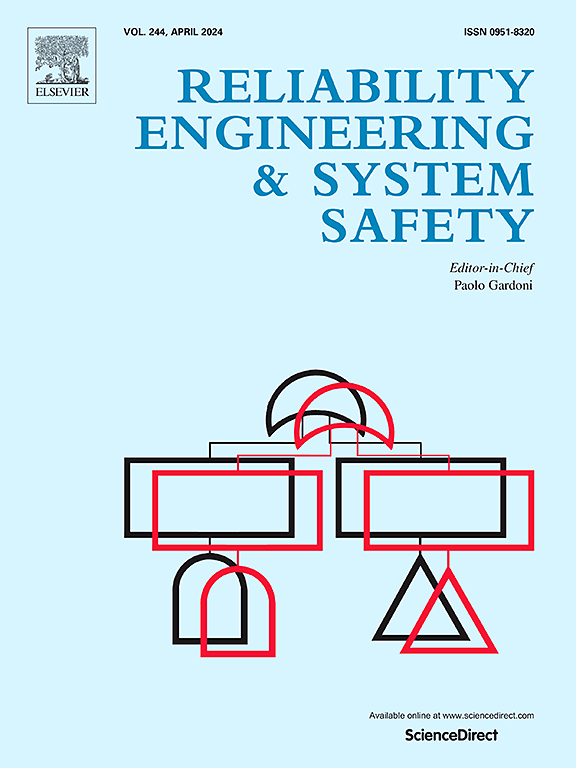PDET-based assumption-free method for efficient seismic fragility assessment of slopes with combined uncertainties of soil materials and input ground motions
IF 9.4
1区 工程技术
Q1 ENGINEERING, INDUSTRIAL
引用次数: 0
Abstract
Seismic fragility denotes the probabilities of a system exceeding some prescribed damage levels under a range of seismic intensities. Classical seismic fragility studies in slope engineering usually construct fragility functions by making some assumptions for fragility curve shape, and always neglect spatial variability of soil materials. In this study, an assumption-free method on the basis of probability density evolution theory (PDET) is proposed for seismic fragility assessment of slopes. The random input earthquakes and spatially-variable soil parameters in slope are simultaneously quantified. By the proposed method, assumption-free fragility curves of a slope are established without limiting the fragility curve shape. The obtained fragility results are also compared with those from two classic parametric fragility methods (linear regression and maximum likelihood estimation) and Monte Carlo simulation. The results demonstrate that the proposed assumption-free method has potential to gives more rigorous and accurate fragility results than classical parametric fragility analysis methods. With the proposed method, more reliable fragility results can be obtained for slope seismic risk assessment.
基于pdt的边坡地震易损性综合评价方法
地震易损性是指在地震烈度范围内,系统超过某些规定破坏等级的概率。边坡工程中经典的地震易损性研究通常通过对易损性曲线形状的假设来构建易损性函数,而忽略了土体材料的空间变异性。本文提出了一种基于概率密度演化理论(PDET)的边坡地震易损性评估方法。同时对随机输入地震和边坡土体参数进行了量化。该方法在不限制脆性曲线形状的情况下,建立了边坡的无假设脆性曲线。并对两种经典参数脆弱性方法(线性回归和极大似然估计)和蒙特卡罗模拟的脆弱性结果进行了比较。结果表明,与经典的参数脆性分析方法相比,本文提出的无假设脆弱性分析方法具有更严格、更准确的脆弱性分析结果。该方法可为边坡地震危险性评估提供更可靠的易损性结果。
本文章由计算机程序翻译,如有差异,请以英文原文为准。
求助全文
约1分钟内获得全文
求助全文
来源期刊

Reliability Engineering & System Safety
管理科学-工程:工业
CiteScore
15.20
自引率
39.50%
发文量
621
审稿时长
67 days
期刊介绍:
Elsevier publishes Reliability Engineering & System Safety in association with the European Safety and Reliability Association and the Safety Engineering and Risk Analysis Division. The international journal is devoted to developing and applying methods to enhance the safety and reliability of complex technological systems, like nuclear power plants, chemical plants, hazardous waste facilities, space systems, offshore and maritime systems, transportation systems, constructed infrastructure, and manufacturing plants. The journal normally publishes only articles that involve the analysis of substantive problems related to the reliability of complex systems or present techniques and/or theoretical results that have a discernable relationship to the solution of such problems. An important aim is to balance academic material and practical applications.
 求助内容:
求助内容: 应助结果提醒方式:
应助结果提醒方式:


